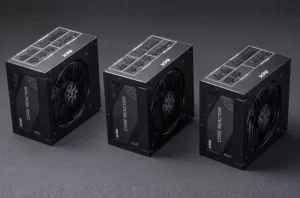The question “How Much RAM For Gaming Do I Really Need?” is one that comes up quite often, particularly among gamers who are looking to build their own rigs. There are a number of factors to consider, including the games you want to play, the resolution you want to play those games at, and the settings you’re planning on using. And while building your own PC is certainly fun and all, coming up with an effective budget plan sure isn’t. So we’ve compiled this handy guide to help you decide what RAM amount will meet your needs.
What Is RAM?
RAM (random access memory) is a type of computer memory that can be accessed randomly; that is, any byte of memory can be accessed without touching the preceding bytes. RAM is much faster to read from and write to than other forms of storage, such as hard disks and optical media.
DDR 4 is the most common form of RAM in use as of this writing. It has been used on many devices since its introduction in 2014 and has higher bandwidth and faster speeds than its predecessor, DDR 3. Several manufacturers are planning to upgrade their devices to DDR 5 RAM which was released in 2020, but it is likely that the high cost of upgrading will delay widespread adoption until prices fall.
What Does RAM Do to Gaming Anyway?
RAM is the most important component in a computer for gaming. It determines how quickly and smoothly your games can run, as well as how many games you can have open at once. The more RAM you have, the better your gaming experience will be because it allows you to use higher graphical settings without having your computer lag or freeze up. When your computer is low on RAM, it has to use the hard drive to store data, which can cause choppy gameplay and even crashes.
RAM Speed vs Capacity for Gaming
While adding more RAM memory to a system will not improve performance if the user already has enough memory, there is a strong correlation between the RAM speed of a module and its ability to read and write data. Today, DDR 4 RAM is the most prevalent type of RAM in desktops, laptops, and tablets. If you’re shopping for a gaming RAM, you may have heard terms such as DDR 4 RAM and clock speeds of 2666MHz, 3200MHz, or even 4000MHz. What does all this RAM jargon mean? Note that the higher the number, the faster the RAM memory can read and write.
Most computer memory kits come with a default speed, and to unlock the full potential of the memory, you need to change the memory’s speed in your computer’s BIOS settings.
What Are Common RAM Configurations?
There are many different types of RAM configurations, but the most common ones are dual-channel and quad-channel. Dual-channel RAM operates two memory modules simultaneously, while quad-channel operates four modules simultaneously. This can provide a performance boost for gaming and other intensive tasks.
Most modern computers have 8 GB, 16 GB, or 32 GB of memory and most are configured in dual-channel mode.
One important thing to keep in mind when choosing RAM is compatibility. Make sure the type of RAM you choose is compatible with your motherboard and CPU. Also, be sure to check the maximum wattage that your system can handle, as exceeding this limit can damage or even destroy your hardware.
How much RAM for desktops?
What amount of GB RAM should I buy for my desktop computer? Is 8 GB RAM really enough? Or do you need 16 GB RAM or maybe 32 GB RAM? What about 64 GB RAM? This can be a difficult question to answer depending on what desktop operating system and programs you want to run. Upgrading RAM is not difficult, so let’s dive in to find the answer!
8GB RAM for Gaming: The Bare Minimum
8GB RAM is the bare minimum for gaming these days. While you may be able to get away with 4 GB, your gaming experience will be much better with 8GB if you are an average gamer. This is especially true if you’re playing the latest games that require more system resources. So, if you’re looking to buy a new gaming PC or upgrade your current one, make sure you have at least 8GB of RAM.
16GB RAM for Gaming: The Sweet Spot
With 8GB becoming the new standard for gaming, many gamers are wondering if 16GB is overkill. The answer? Not at all. In fact, for modern games, 16GB is the sweet spot for gaming. It’s enough memory to keep most games running smoothly, without taking up too much of your system’s resources. And it’s perfect for gamers who want to future-proof their systems. Red Dead Redemption 2 requires a minimum of 8 GB RAM and is recommended to be played with 12GB RAM.
So if you’re looking to buy a new gaming PC or upgrade your old one, don’t hesitate to go with 16GB of RAM. You won’t regret it.
32GB RAM for Gaming: Is it too Much?
Are you a PC gamer who is looking for the best gaming experience? If so, you may be wondering if 32GB of RAM is too much. The answer to that question depends on your needs and what you want to get out of your modern games and gaming experience.
One thing is for sure – if you want the best performance possible, then 32GB of RAM is a good option. This amount of memory will allow you to run multiple applications, have multiple tabs open in the browser and games at the same time without experiencing any lag or slowdown. It will also give you plenty of room to store your game files and save games. Elden Ring requires a minimum of 12 GB RAM and is recommended to be played with 16 GB RAM.
If you are on a tight budget, however, 32GB of RAM may be more than you need. A lower amount of memory like 16GB will still allow you to play most games, but you may have to close some applications in order to run others.
64GB RAM for Gaming: Is it Overkill?
64GB RAM is great for gaming, but is it overkill? If you’re like most gamers, you want the best gaming experience possible. And that often means spending money on the best hardware. But is 64GB of RAM really necessary for gaming?
The short answer is no. Most games don’t require that much memory, and even high-end games won’t use all of that up. So you could save yourself some money by going with a lower amount of RAM.
But there are some benefits to having more RAM. For one, it can help reduce loading times. And if you plan to run multiple applications at the same time, then you’ll definitely need more than 16GB of RAM.
So should you buy a 64GB RAM for gaming? It depends on your needs and budget.
How much RAM for laptops?
RAM is an important factor to consider when choosing a laptop for gaming. The more RAM a laptop has, the better it will perform. Most laptops come with 8GB of RAM, but for gaming, 16GB is ideal. If you plan on using your laptop for other activities as well, such as editing photos or videos, then you may want to consider getting a model that has 32GB or more RAM.
Keep in mind that not all laptops can accommodate more than 8GB of RAM, so be sure to check your system specifications before making a purchase, especially if you think about upgrading RAM.
How much RAM for tablets?
It’s important to keep in mind that not all tablets are created equal. Some tablets are designed for basic tasks like checking email and browsing the web, while others are made for more intensive activities like gaming and graphic design. So how much RAM do you need in a tablet? It depends on what you plan to use it for.
If you’re just looking for a basic device to check email and browse the web, 2GB or 4GB of RAM should be plenty. However, if you plan on using your tablet for gaming or other more resource-intensive activities, then you’ll want to go with a model that has 8GB or more of RAM.
Best DDR4 RAM for gaming
TEAM T-Force XTREEM ARGB 16GB DDR4-3600MHz
The best RAM for gaming
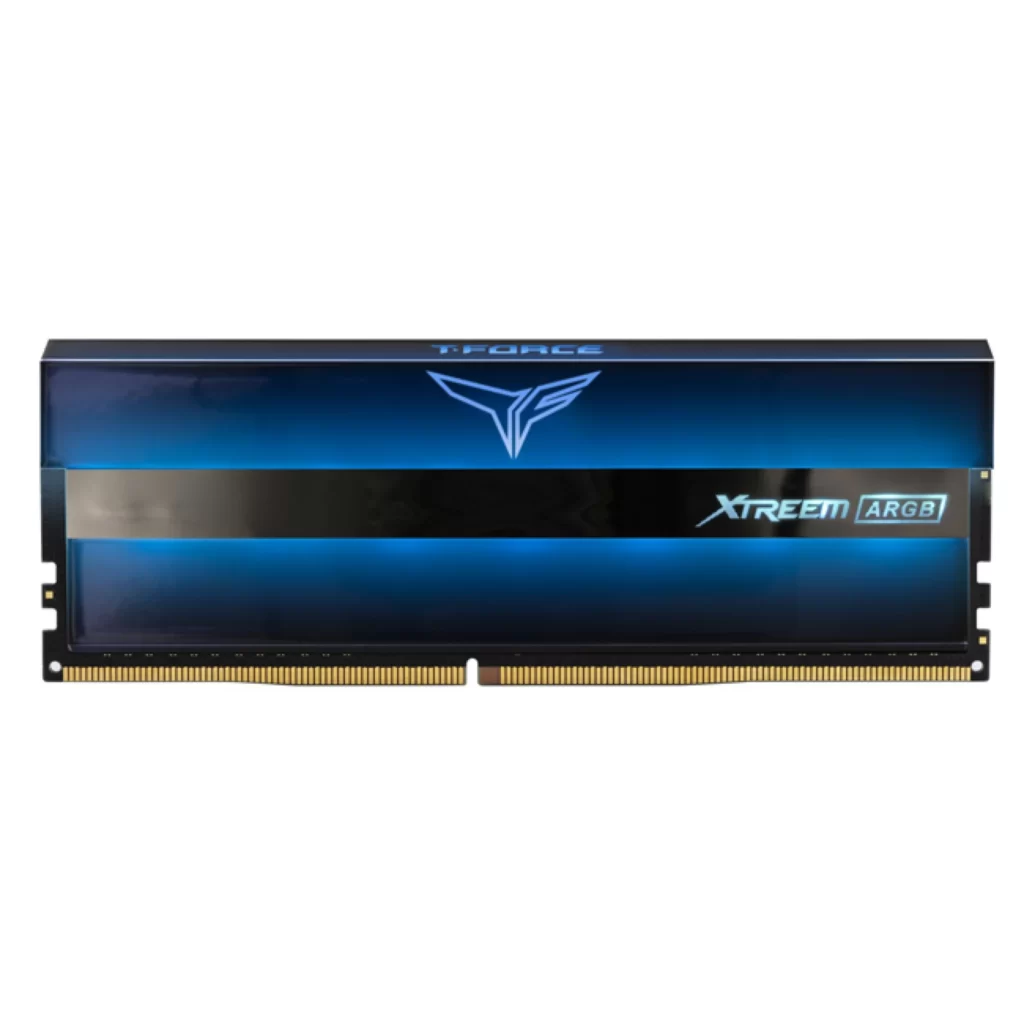
The Team T-Force Xtreem ARGB DDR4-3600MHz C14 is a beast of a kit, boasting some of the best clock speeds currently available, along with a rock-bottom CAS latency of 14. When it comes to gaming PCs, AMD Ryzen rigs tend to favor less latency over raw speed, so this RAM kit fits right into the sweet spot for such builds.
Specifications
- Speed: 3600MHz
- Timing: 14-15-15-35
- CAS latency: 14
- Voltage: 1.35 V
- DIMMs: 2x 8GB
G.Skill Trident Z Neo 32GB DDR4-3600MHz
The best RAM for gaming with an AMD systems
The Team Xtreem ARGB DDR4-3600MHz C14 is a beast of a kit, The 32GB DDR4 memory kit, G.Skill Trident Z Neo DDR4-3600MHz is the perfect way to take your system to the next level. It offers blazing-fast speeds and plenty of storage capacity, making it ideal for gaming, multimedia editing, and other high-demand tasks. Plus, its stylish design and the sleek heat spreaders keep your system looking good while keeping temps under control.
Specifications
- Speed: 3600MHz
- Timing: 18-22-22-42
- CAS latency: 18
- Voltage: 1.35 V
- DIMMs: 2x16GB
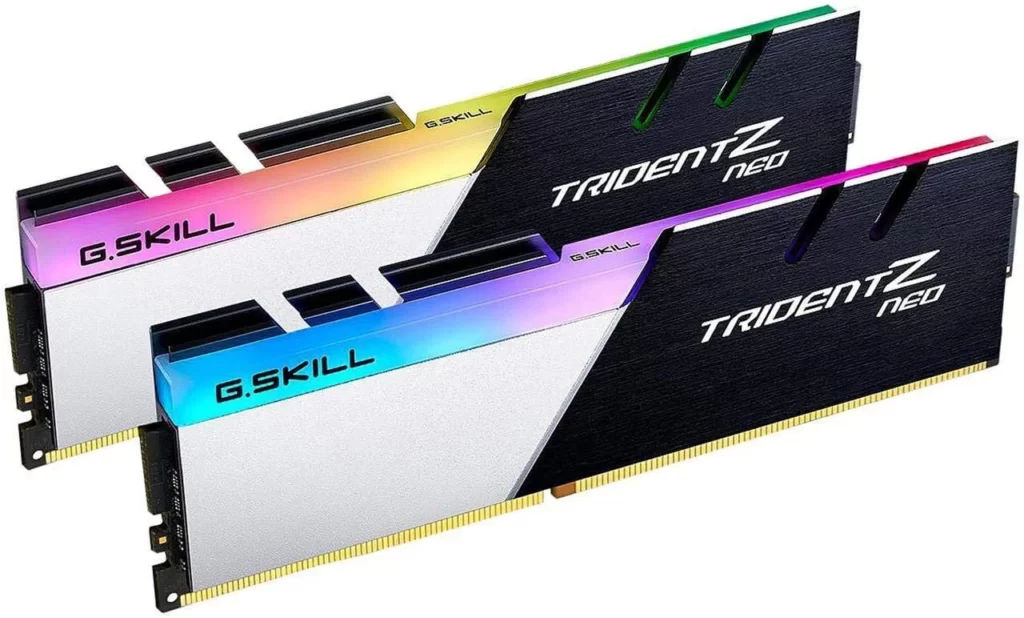
G.Skill Trident Z Royal 32GB DDR4-4000MHz
The best RAM for gaming with an Intel systems

The 32GB DDR4 memory kit, G.Skill Trident Z Neo DDR4-3600MHz is perfect way to take your system to the next level. It offers blazing-fast speeds and plenty of storage capacity, making it ideal for gaming, multimedia editing, and other high-demand tasks. Plus, its stylish design and the sleek heatspreaders keep your system looking good while keeping temps under control. Reasons to buy
Specifications
- Speed: 4000MHz
- Timing: 17-18-18-38
- CAS latency: 17
- Voltage: 1.40 V
- DIMMs: 2x16GB
Corsair Dominator Platinum RGB 32GB DDR4-3200MHz
The best high-end RAM for gaming
Corsair’s Dominator Platinum RGB DDR4-3200MHz is the perfect balance of style, performance, and stability. The DDR4 memory module has a sleek all-black design with an integrated heat sink and Corsair’s signature platinum-colored LED bar. It also offers lightning-fast speeds of 3200MHz, ensuring that you’ll never be left waiting for your applications to load again.
Specifications
- Speed: 3200MHz
- Timing: 16-18-18-36
- CAS latency: 16
- Voltage: 1.35 V
- DIMMs: 2x16GB

Best DDR5 RAM
G.Skill Trident Z5 RGB DDR5-6000MHz
Fastest RAM
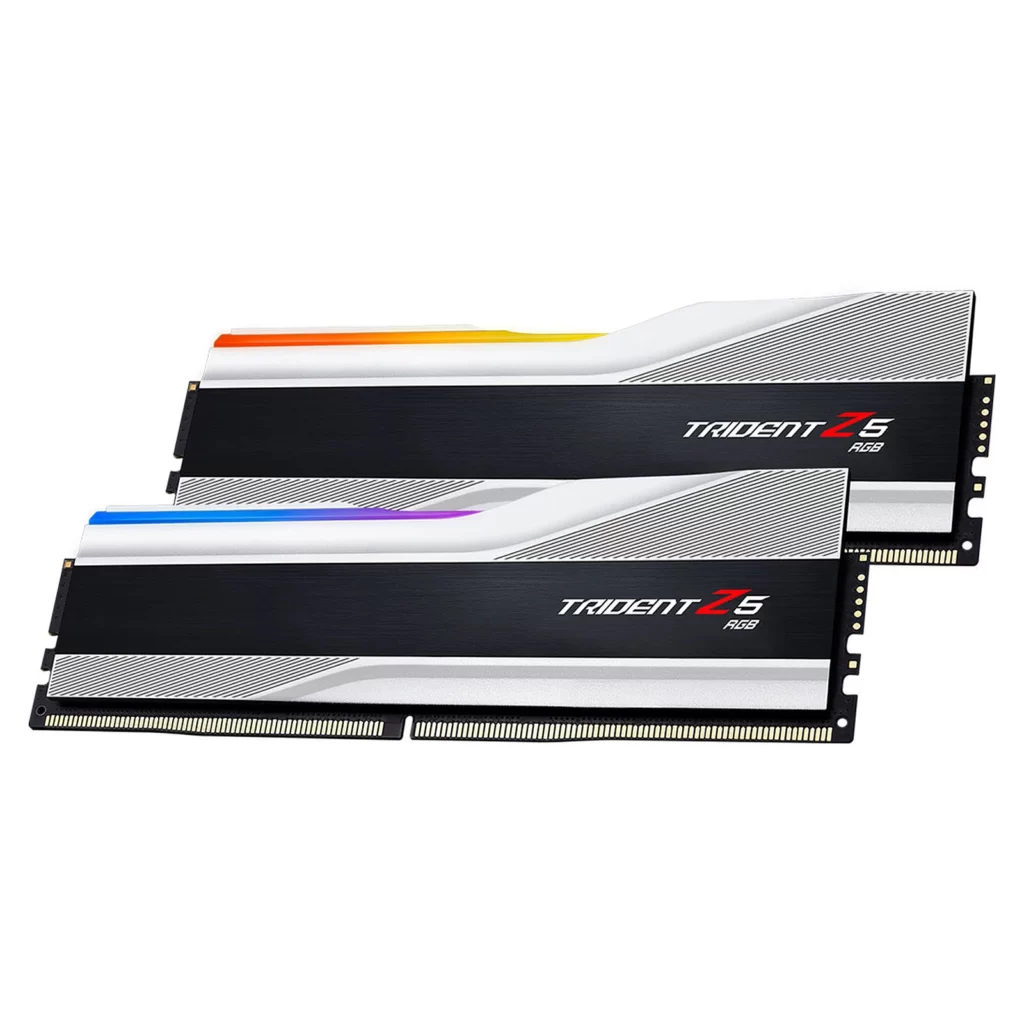
The Trident Z5 RGB is the fastest RAM and the perfect choice for gamers and PC enthusiasts who need high-performance and flashy aesthetics. It delivers blistering speeds of up to 6000MHz, along with the mesmerizing RGB lighting that’s sure to turn heads. Plus, it comes in a stylish aluminum heatsink design that looks great on any build. Best of all, it’s backed by a lifetime warranty from G.Skill.
Specifications
- Speed: 6000MHz
- Timing: 36-36-36-76
- CAS latency: 36
- Voltage: 1.40 V
- DIMMs: 2x16GB
TeamGroup T-Force Delta RGB DDR5-6400MHz
With speeds of up to 6400MHz and capacities of up to 32GB, the TeamGroup T-Force Delta RGB is perfect for gamers and enthusiasts who need DDR5 performance. The Delta RGB features a unique design with an integrated heat sink that dissipates heat quickly and effectively, ensuring stable operation even during the most intense gaming sessions. Plus, it comes with RGB lighting that lets you customize your system’s look to match your style.
Specifications
- Speed: 6400MHz
- Timing: 40-40-40-84
- CAS latency: 40
- Voltage: 1.35 V
- DIMMs: 2x16GB

Best DDR4 RAM for Laptop
Crucial 32GB DDR4-3200MHz
Best DDR4 RAM for Laptops
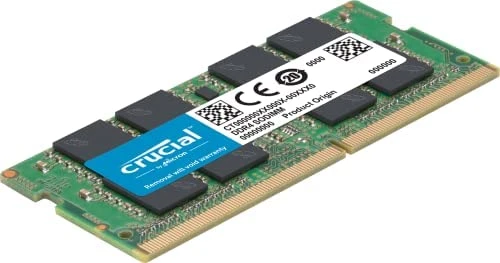
If you’re looking to take your laptop to the next level, you need Crucial RAM 32GB. This DDR4 3200MHz memory is the perfect way to boost performance and multitasking power. Plus, it’s backward compatible with DDR4 2133MHz and 2666MHz modules, so you can upgrade easily.
Specifications
- Speed: 3200MHz
- CAS latency: 22
- Voltage: 1.20 V
- DIMMs: 2x16GB
Corsair Vengeance Performance 32GB DDR4-3200MHz
Best Overclocking DDR4 RAM for Laptops
CORSAIR Vengeance Performance laptop memory is designed for gamers and power users who demand the best performance from their systems. It’s built using premium components and hand-selected ICs and features dual-channel architecture for peak performance. The fast clock speed and low latency of DDR4 3200MHz give you the edge in demanding applications, while the aluminum heat spreader ensures that your system stays cool under pressure.
Specifications
- Speed: 3200MHz
- CAS latency: 22
- Voltage: 1.20 V
- DIMMs: 2x16GB

Conclusion
Basically, once you’re sure what games you will be playing, it’s helpful to try and figure out the resolution you want to play those games at. The higher the resolution and texture levels you’re running at, the more important it is that your graphics card has lots of RAMs available to it. But the bottom line is this: if you want to play new games on high settings at 1080p right now, go with 8GB of RAM. If 4K gaming is more your speed, 12 GB of RAM should be enough to keep things running smoothly. Beyond that, 16 GB seems like a pretty safe bet for any prospective 4K gamer. So, how much RAM for Gaming do you really need for gaming? It depends.




